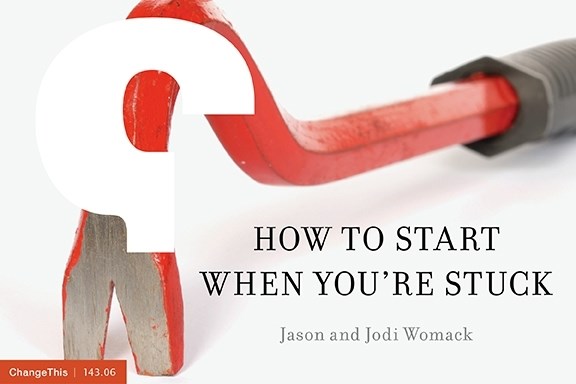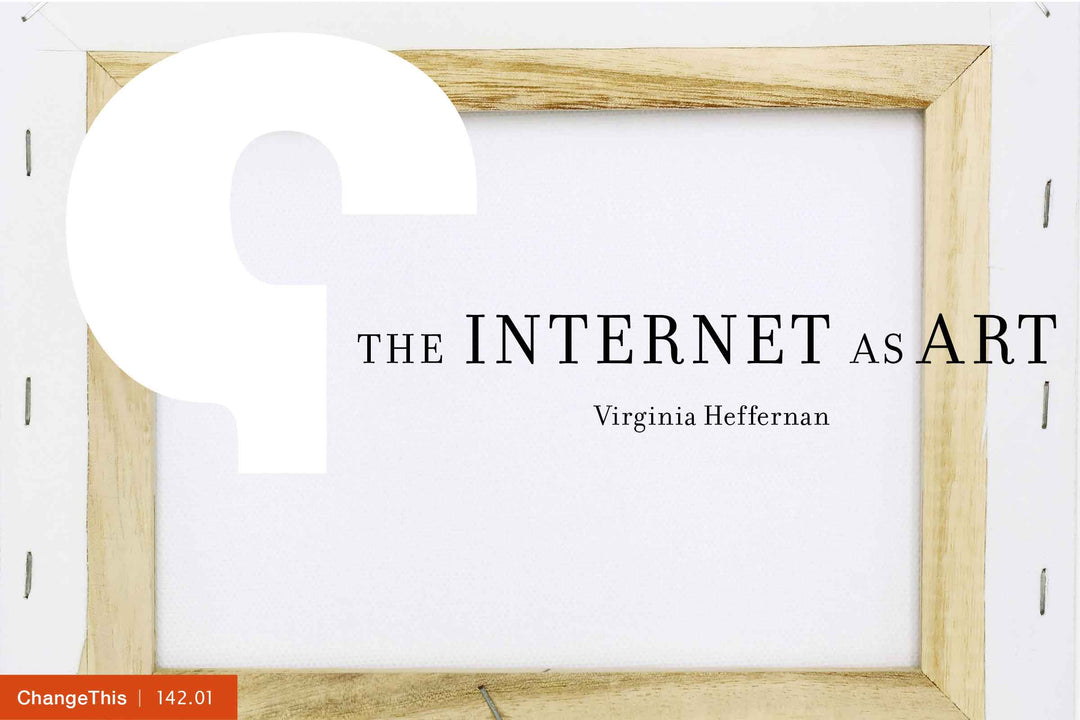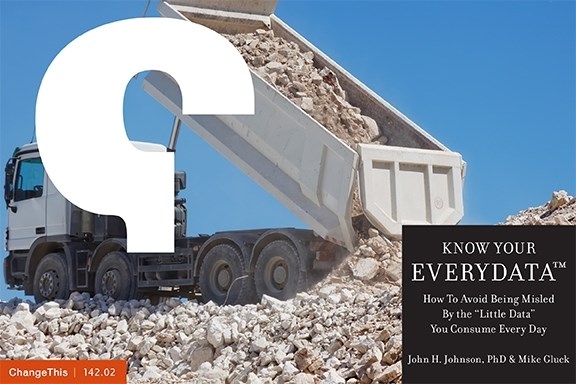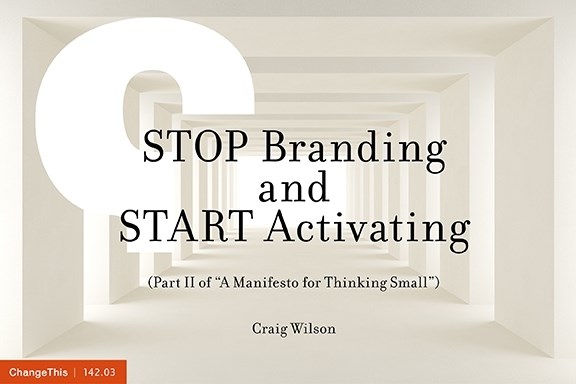ChangeThis RSS
"Maybe it's a career change, a health and fitness transformation or a personal project or side business you want to start, but for some reason—whatever it is—you haven't started yet.
'Not enough time.'
'Not enough resources.'
'Not enough support.'
Statements like these not only limit your potential but hinder your productivity. In order to find the time, the resources and the support you need, you first need to GET MOMENTUM. You need more than a little motivation, but a true forward movement. Momentum means you're moving, and things are happening. It means you're making progress, and it feels good! Momentum is as personal in nature as it is different for everyone and for every project. What works for someone else may not work for you. The key is to practice thinking bigger and more creatively to put yourself in a position to move beyond the inertia that is holding you back from you dreams."
Continue reading
The Internet ... is a massive and collaborative work of art— something billions of us contribute to every millisecond, with every Instagram photo, every "like," every message-board post, every tweet, every eBay review, every streamed video or song.
Continue reading
"Status reports. Emails. Weather reports. From the moment your alarm jolts you awake, you're bombarded with data. Here's an eye-opening fact for you: the amount of data you likely consume in a day—34 gigabytes—would fill dozens of pickup trucks if you printed it all out.
So what's the problem with all this data? This: the majority of numbers you read in newspapers, hear on TV, and see at work are either wrong or misleading—or both."
Continue reading
"Part 1 of this series explored the inefficacy of 'Big Idea' campaign marketing and noted the success of brands practicing the contrary, described as a process of nurturing the character of an organization. Part 2 is presented as a manifesto to marketers and brand strategists to STOP Branding, to stop trying to create demand, to adopt a different frame of mind, to think in terms of relationship activation by being true to a set of principles that will connect them to existing, latent demand.
Marketers don't generate demand. Great companies spend their time understanding what and where latent demand exists and build the products, services, and user experiences that connect to that demand. They delve into their founding principles and develop, invent, or innovate goods and services specifically driven and defined by those principles. Don't misinterpret this effort. It's not a matter of chasing market opportunity. It's as much an inward journey as it is recognition of the current state of any given market. This is where the mental shift is happening among great companies that are attracting incredibly loyal customer bases. They are thinking about markets and the competitive environment they reside in terms of user experience design."
Continue reading
"Far too many corporate social responsibility statements and annual reports claim, 'Our employees are our most important asset.' Is that what we are? Assets? No, we are not assets. We are not human capital. We are not headcount. You cannot count me.
We are the individuals who make up our organizations. We are team members. We are co-workers. We are colleagues. We are individuals. We are both leaders and followers. We strive for purpose in our lives, and in the organizations that we work for.
It matters not what level we reside on in the corporate hierarchy. We are all on the same team in defining and enacting that purpose. Team members are not an asset, but rather the key link to improving society.
The importance of purpose on the lives of employees, and for the betterment of society, has become table stakes. Indeed, the individuals that make up the organization are its most important advantage."
Continue reading




